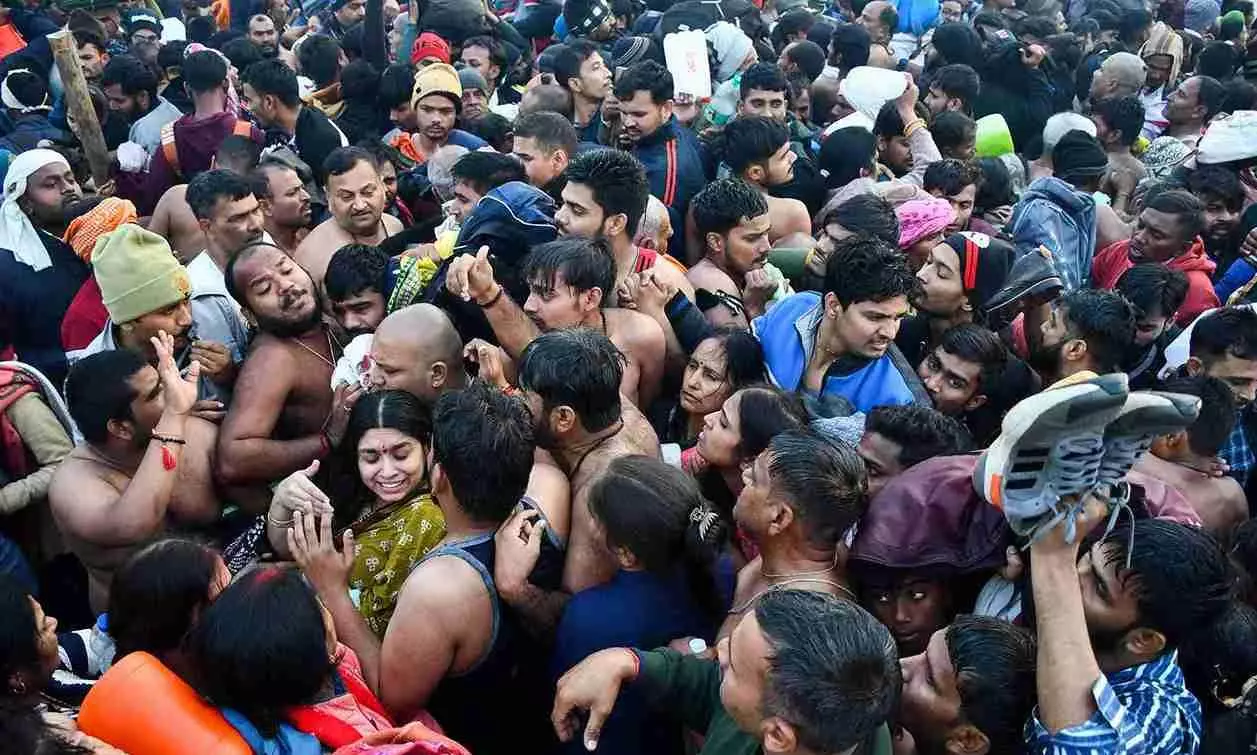
Maha Kumbh: Sudden 'push-and-shove' among devotees led to stampede, says witness
According to the witness, stampede took place around 3 am near Triveni Sangam before holy bath, when some 50-60 lakh people had collected at each bathing ghat

A reputed astrologer from Karnataka said that a pre-dawn “push-and-shove” situation occurred suddenly among devotees at the Maha Kumbh in Prayagraj, which led to the stampede, in which more than a dozen pilgrims have died and many others injured.
According to Bhanuprakash Sharma, the astrologer, the stampede took place around 3 am near the Triveni Sangam, ahead of the planned ‘Amrit Snan’ or holy bath, when some 50-60 lakh people had collected at each bathing ghat.
"Initially everyone was performing the holy dip peacefully,” Sharma told The Federal. “Suddenly, a push-and-shove situation arose among the devotees, leading to the stampede," said the resident of Srirangapatna in Karnataka.
Also read: LIVE | Kumbh stampede: No update on casualties yet; Yogi blames devotees
Deaths and injuries
Sharma said he did not see anyone dying but officials and rescuers have said a dozen pilgrims have died. Several others have been injured.
Sharma, however, saw more than 10 people seriously injured, “and their condition was concerning”. Additionally, around 60 people sustained minor injuries.
The injured were rushed to hospitals in ambulances. Uttar Pradesh chief minister Yogi Adityanath was present at the site, Sharma added.
Mauni Amavasya
According to him, there were a total of 60 bathing ghats and 13 Akhadas at the Kumbh Mela.
“It is believed that on Mauni Amavasya, the Sapta Rishis (seven sages) take a holy dip during the Brahma Muhurta at these Akhadas. Therefore, after the Nagas (ascetics) complete their holy dip, the public is allowed to take a dip,” he said.
He said it was when the Nagas were finishing their Amrit Snan that the stampede took place.
Also read: Kumbh stampede: A deadly cocktail of ‘VIP culture’ and mismanagement
Closure of bathing ghats
“The government immediately intervened and closed the bathing ghats for three hours. After the situation normalised, the Amrit Snan was allowed to resume. And the pilgrims again flocked to the bathing ghats.
“Those who couldn’t participate were advised to return after February 5," Sharma explained. He said his group of 15 people, led by Prakash Ayyangar from Malleshwaram in Bengaluru, was visiting the Maha Kumbh.
Also read: BJP, VHP dipping into Maha Kumbh to expand social outreach
Karnataka devotees
According to him, around two lakh devotees from Karnataka had arrived for the Amrit Snan. “It is believed that taking a holy dip at the confluence of the two rivers on Mauni Amavasya will lead to liberation from the cycle of rebirth,” he explained.
Sharma, president of the Shashwati Dharmika Kriya Samiti and a renowned astrologer, said after Amrit Snan, the devotees were expected to visit Kashi and seek the blessings of Lord Vishwanath.
